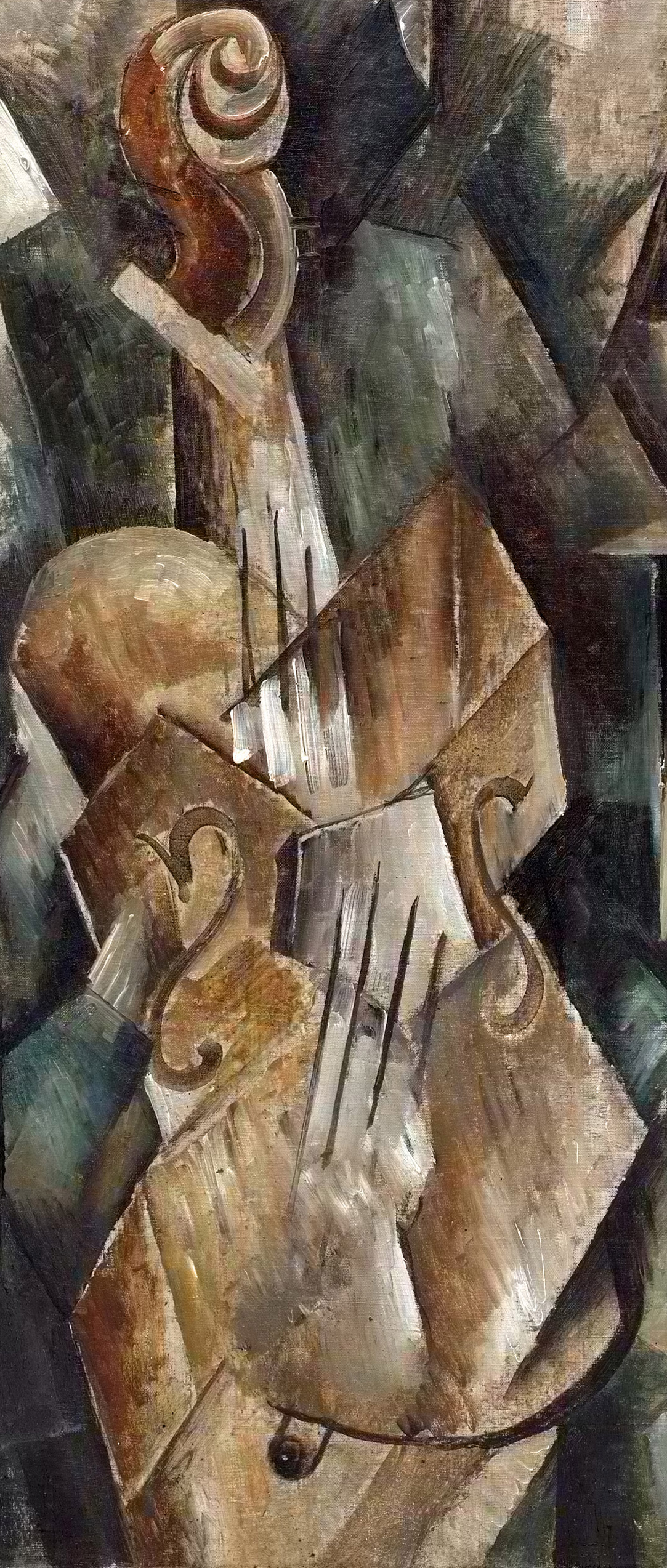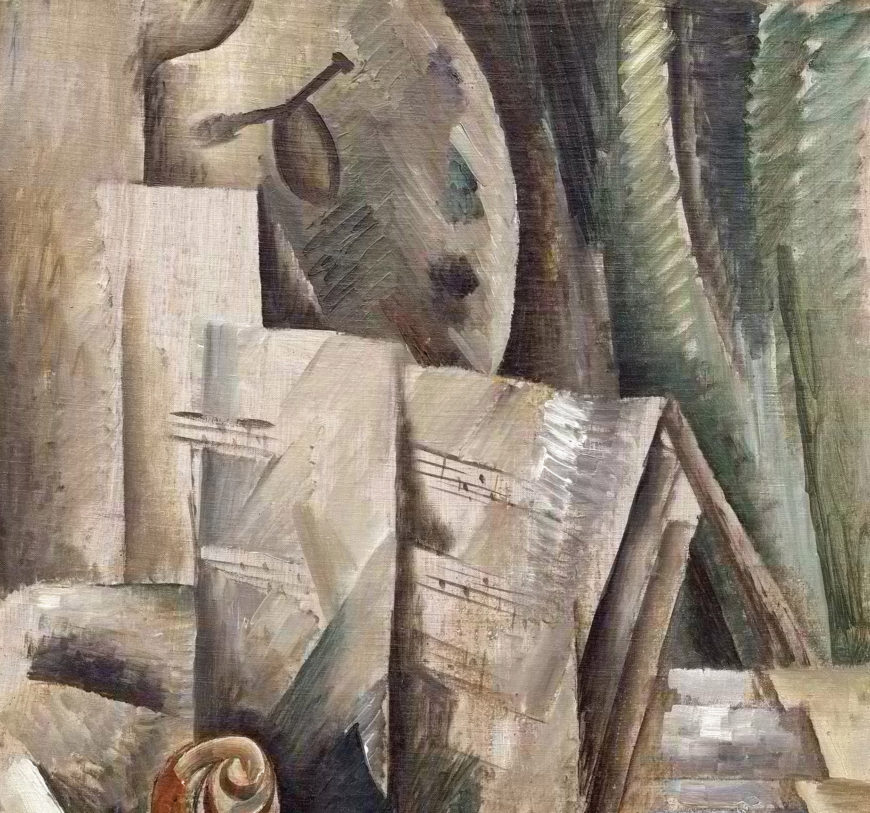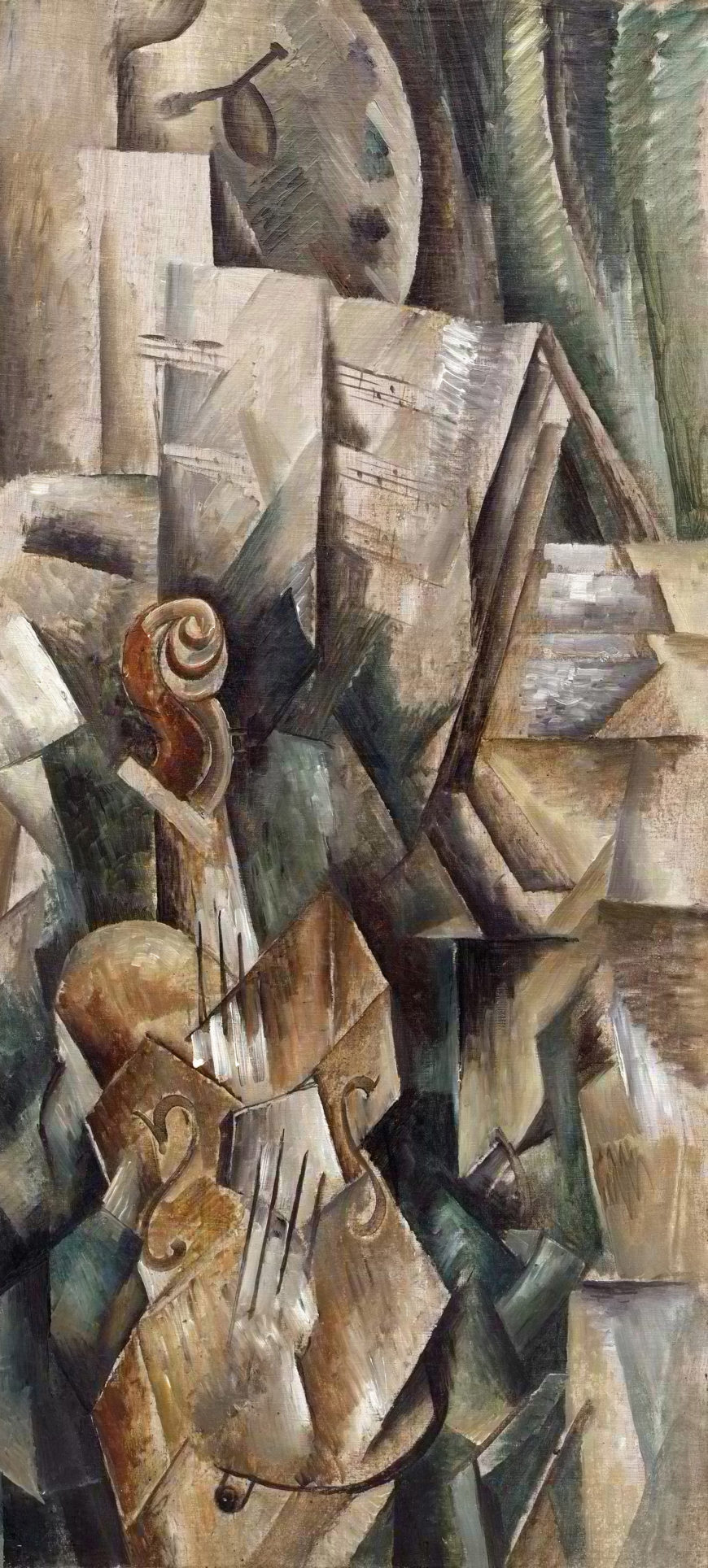
Georges Braque, Violin and Palette, 1909, oil on canvas, 36 1/8 x 16 7/8 inches (Solomon R. Guggenheim Museum, New York)
Although much of the painting is not naturalistic, we can identify the still-life objects in Georges Braque’s Violin and Palette fairly easily. The form of the violin at the bottom of the painting is fractured; the body of the instrument has been broken up into geometric shapes, and on the right side they grow like crystals into the surrounding space.
While the lower portion of the instrument is painted naturalistically and visibly recedes, the upper left side does not, and part of it is missing altogether. The bridge that supports the strings has been tilted and flattened into a light gray pentagon between the S-shaped sound holes. The strings are broken into two differently angled sections, the neck is shortened, and the scroll at the top is displaced and twisted in relation to the body.
Tradition and innovation
This painting is an early example of Analytic Cubism, the name given to the first phase of Picasso’s and Braque’s joint endeavor to create a new approach to the pictorial representation of objects in space. Despite its often baffling innovations, one of the defining features of Cubism is its engagement with the European painting tradition.
This engagement with tradition is particularly evident in Picasso’s and Braque’s use of traditional subjects: landscapes, figure studies, portraits, and still life paintings of dishes, fruit, glassware, and musical instruments. Landscapes largely disappeared after the earliest stages. Picasso made more figure studies and portraits during the Analytic Cubist phase, while Braque favored still life subjects.
The relative familiarity of these subjects helps to set Cubism’s radical formal innovations in high relief. Why are objects and even apparently space itself fractured and faceted? Many different explanations have been put forward by art critics and historians, but they all revolve around Braque and Picasso’s engagement in a radical new analysis of three-dimensional form and its relation to both literal and pictorial space.
New strategies of representation
Some of the distortions in Violin and Palette, most notably the relationship of the violin’s scroll to its body, may be explained as the result of combining several different angles of view into a single depiction. This explanation was frequently advanced by contemporaneous critics, and it does explain many of the Salon Cubists’ paintings. However, it fails to account for all of the distortions in Braque’s Violin and Palette, such as the way parts of the violin are abstracted into geometric forms, and the elimination of entire parts of the instrument.
It also does not address the way in which the surrounding space is represented as if it too were fractured geometric abstractions of solid forms. These are all important characteristics of Braque’s Cubist exploration of new strategies of pictorial representation.
The upper half of Violin and Palette displays additional approaches to representation. We see several pages of sheet music, perhaps propped up on a music stand behind the violin depicted below. Paper is flat, but Braque has used shading to indicate creases and the bowing of the page.This gives the paper tangible form while also connecting it to the abstract geometric pattern that dominates the painting. Notice that Braque paints the musical staff lines projecting to the left beyond the page on which they are printed. This is an echo of the way he painted cubic sections of the violin growing into space below.
A trompe l’oeil illusion
Above and behind the sheet music, Braque painted a green curtain and a palette hanging from a nail. Both of these objects refer to traditional naturalistic representation. The curtain is a conventional framing device used in European painting to suggest spatial depth. In Braque’s painting the curtain frames the palette. Although the curtain, nail, and palette are painted in a sketchy manner that is not very realistic, cast shadows make a direct visual reference to the kind of trompe l’oeil illusionism employed in William Harnett’s Violin and Music.
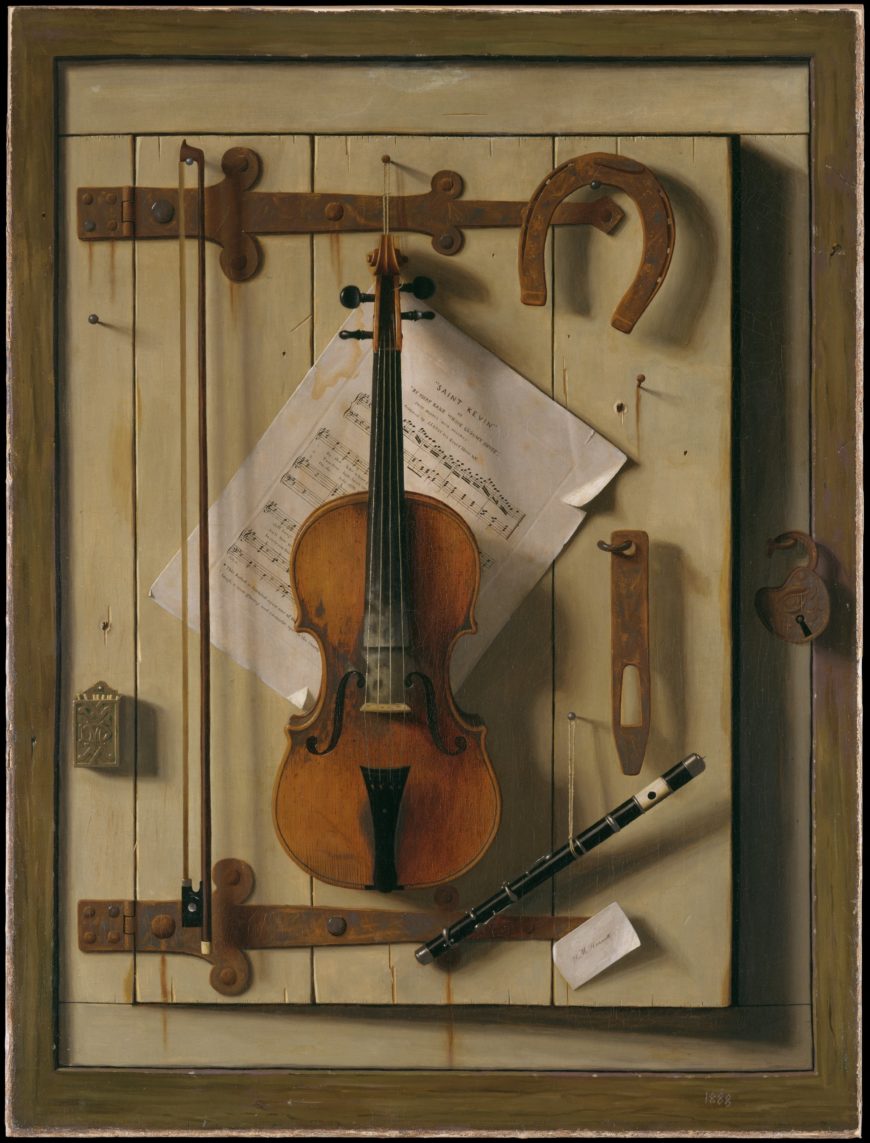
William Harnett, Still Life — Violin and Music, 1888, oil on canvas, 40 x 30 inches (The Metropolitan Museum of Art)
Because the palette is itself flat, and Braque painted shadows behind its curved edges, his illusion is somewhat successful and contrasts with the distorted representation of the violin below. The placement of the nail in the top center of the painting adds another layer to the paintings’ illusion. It looks like it could be literally nailing the canvas to the wall. As a whole, Violin and Palette presents naturalistic representation in juxtaposition to Cubist representational techniques to indicate that these new techniques are alternative, and equally viable, modes of depiction.
A developmental process
Picasso’s and Braque’s Cubism is generally understood to have been a developmental process rather than a style that followed a predetermined theoretical approach. The two artists worked in a close and competitive relationship between 1908 and 1914, meeting regularly to see each other’s latest works, and pushing each other to increasingly daring pictorial innovations. Braque’s Violin and Palette was painted during the early stages of their Cubist explorations. Over the course of the next few years, both artists’ approach to representation became increasingly abstract.
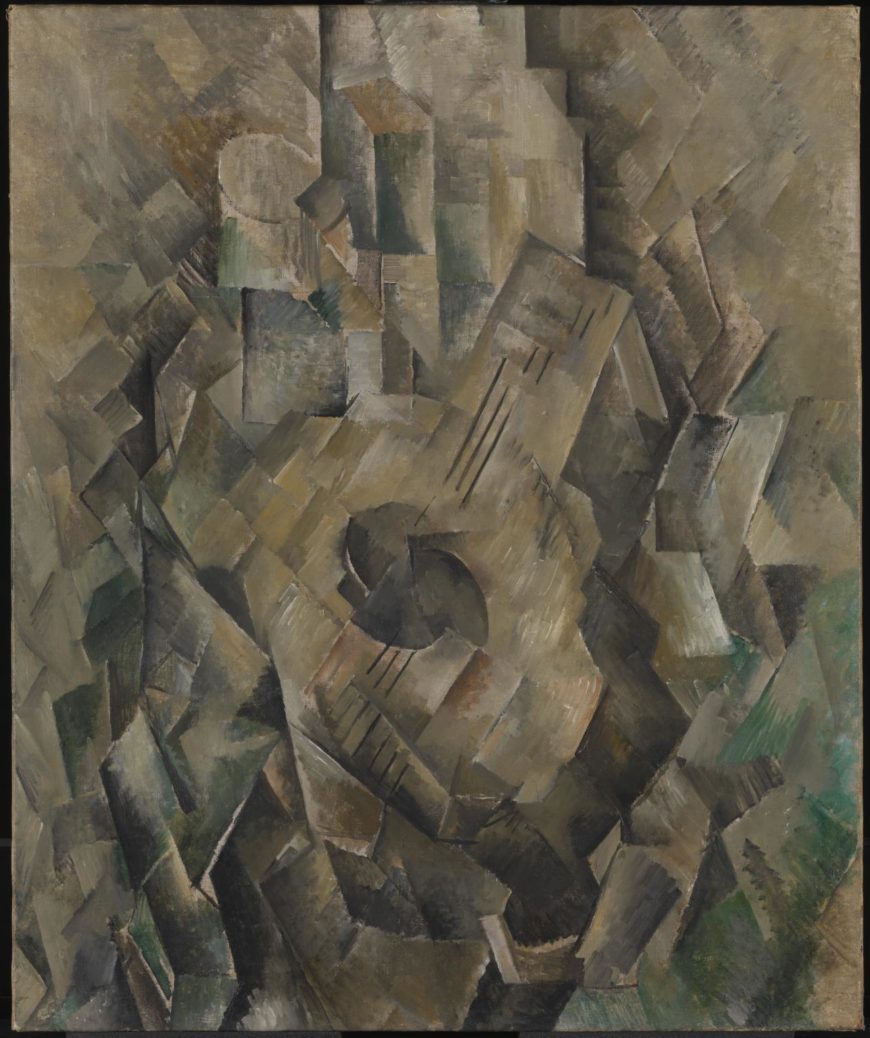
Georges Braque, Mandora, 1909–10, oil on canvas, 71.1 x 55.9 cm (Tate Modern, London)
In Braque’s Mandora, the surface of the painting is divided into a shifting lattice of diamond shapes in which we can dimly perceive the suggestion of several objects. The mandora (a type of lute) is the only object we can see with certainty, but it is a much less substantial presence than the violin in Violin and Palette. Dark geometric shapes create a shadow framing the lighter central facets, suggesting the outline of the mandora and other objects arranged on a table. Vertical rectangles in the upper portion of the canvas may indicate more objects resting on the table top, but there is not enough information to be certain. The still life objects have become a shifting chiaroscuro pattern of abstract shapes that sparkle across the canvas with little regard for legibility or representational accuracy.
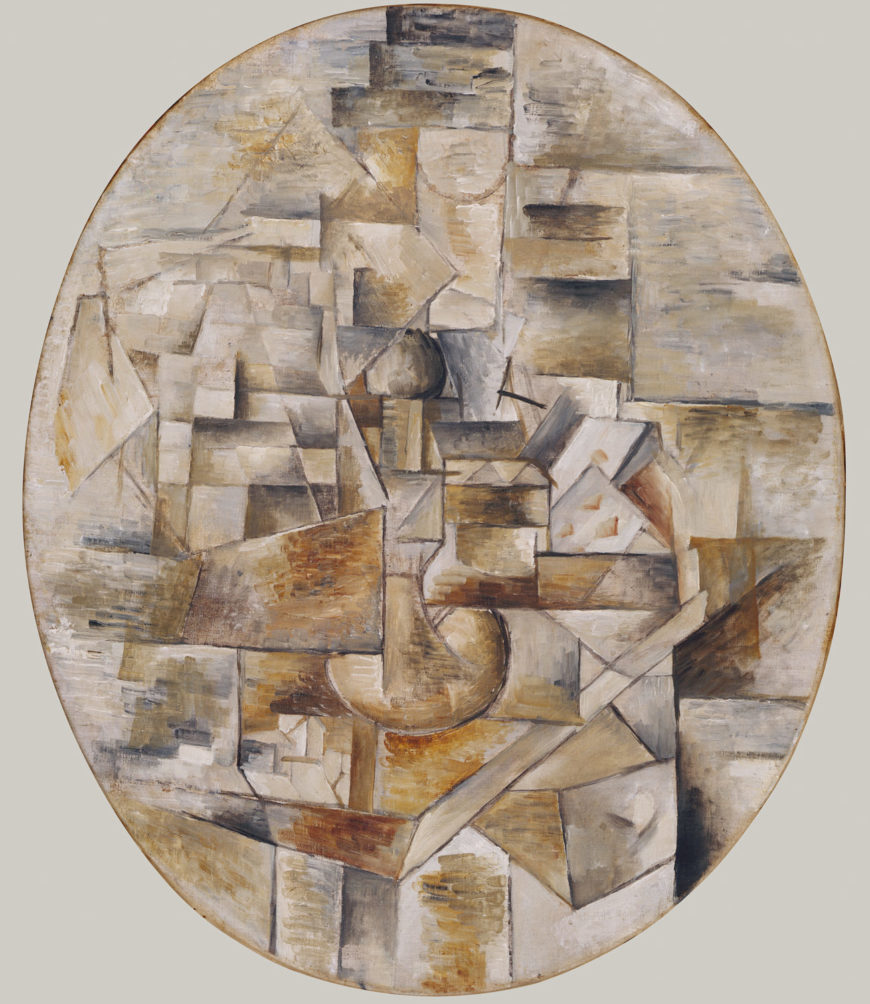
Georges Braque, Candlestick and Playing Cards on a Table, 1910, oil on canvas, 64.8 x 54 cm (The Metropolitan Museum of Art)
A new kind of pictorial space
Candlestick and Playing Cards on a Table is even more difficult to decipher. The title tells us what to look for, and hints of the objects’ forms emerge from the shifting grid of rectangles presented in an oval format. In the center of the composition we can find the circular base of a candlestick. It is placed above the corner of a table, which juts out towards the viewer. The most legible objects are the two playing cards on the right. Below them Braque painted a schematic open drawer, another reference to traditional trompe l’oeil painting effects like the curtain and nail in Violin and Palette.
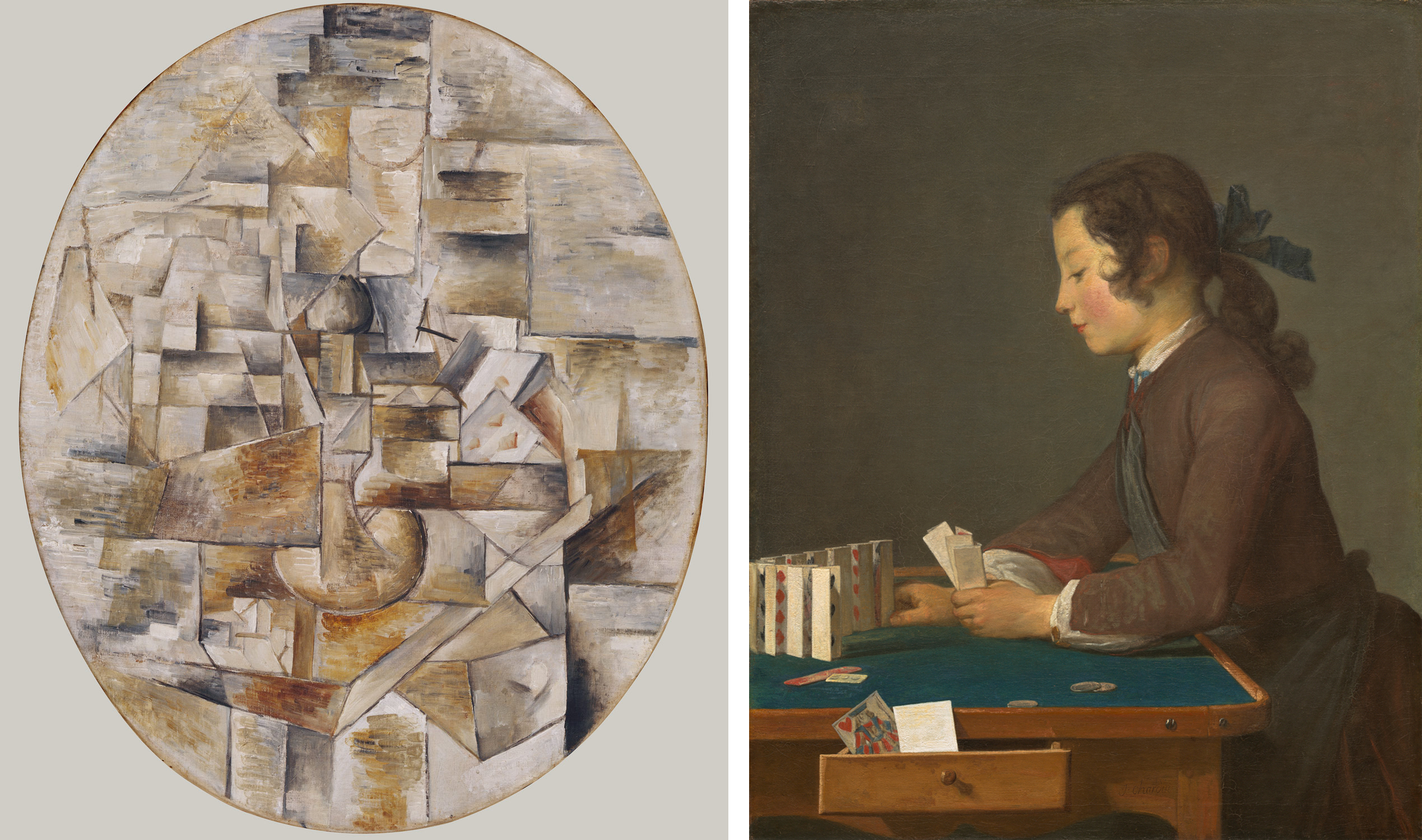
Left: Georges Braque, Candlestick and Playing Cards on a Table, 1910, oil on canvas, 64.8 x 54 cm (The Metropolitan Museum of Art) Right: Jean Siméon Chardin, The House of Cards, 1737, oil on canvas, 82.2 x 66 cm (National Gallery of Art, Washington)
The jutting corner of the table and the open drawer in Braque’s painting are counterpoints to the depiction of an indeterminate space. Black lines that demarcate the edges of objects also create abstract floating planes that hover throughout the painting. This adds another level of complexity to the composition and its suggestion of multiple interlocking layers of planes that fill and define a new kind of shallow pictorial space.
A limited palette
One of the characteristics of Braque’s and Picasso’s Analytic Cubist paintings is their increasingly limited color range. In his earliest Cubist landscapes, Braque used the ochres, greens, and blues favored by Cézanne. Violin and Palette is restricted to browns, grays, and a little green, while the later still life paintings are limited to browns and grays.
From 1909 to 1912 both Picasso and Braque painted almost exclusively in a range of neutral tones before re-introducing color, largely through the use of collage elements. Other Cubist painters often used bright colors, making the use of a limited palette one of the distinctive characteristics of Braque’s and Picasso’s Analytic Cubist paintings. This elimination of color is generally linked to their intense focus on the structural analysis of representing objects in space.

